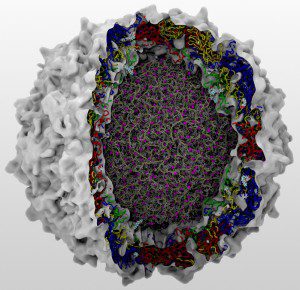

Three years ago today, on 13 January 2011, the last case of poliomyelitis was reported in India. This achievement represents a remarkable turnaround for a country where control of the disease had for years been extremely difficult. As recently as 2009 there were 741 confirmed cases of polio caused by wild-type virus in India. Being polio-free for three years is certainly a cause for celebration, but not for becoming complacent. Immunization efforts in India must not decline, because wild-type and vaccine-derived polioviruses continue to circulate and pose a threat to any unimmunized individual.
Wild polioviruses – those that have always been circulating in nature – continue to cause disease in Afghanistan and Pakistan, two countries close to India. Pakistan reported 58 polio cases in 2012, and 85 so far in 2013; for Afghanistan the numbers are 37 and 12. But distant countries can also transmit polio: recent outbreaks in the Horn of Africa and in Syria originated in Nigeria and Pakistan, respectively.
Perhaps a greater threat are vaccine-derived polioviruses. The Sabin poliovirus vaccines, which have so far been the mainstay of the polio eradication effort, comprise infectious viruses that are taken orally. Upon replication in the intestinal tract, the vaccine strains confer immunity to infection, but they also revert and become capable of causing paralysis. Such vaccine-derived polioviruses circulate and can cause outbreaks of polio. Because India has been using Sabin poliovirus vaccines intensely for many years, there is no doubt that vaccine-derived polioviruses are circulating in that country. If polio vaccine coverage drops, there will be outbreaks of polio caused by vaccine-derived strains. Even if wild polioviruses disappeared from the globe, as long as Sabin vaccines are used, vaccine-derived polioviruses will circulate. The solution to this conundrum is to switch to Salk’s inactivated poliovirus vaccine and wait for the Sabin-derived strains to disappear. This switch is now part of the WHO’s eradication plan (it wasn’t always), but it will not be easy: Salk vaccine must be injected, and therefore requires trained health care personnel; administering Sabin vaccine requires no special skills. But we cannot simply stop immunizing with Sabin vaccine – that is a recipe for outbreaks of polio.
According to the World Health Organization, being free of wild polio for three years means that the virus is probably no longer endemic in India. However, WHO does not certify individual countries as polio-free; rather it declares a WHO region polio-free when all countries in the Region have not reported a case of wild polio for 3 years in the face of highly active surveillance. The Americas, the Western Pacific, and European regions have been declared polio-free by WHO. India is part of the South-East Asia region, which also includes Bangladesh, Bhutan, Democratic People’s Republic of Korea, Indonesia, Maldives, Myanmar, Nepal, Sri Lanka, Thailand, and Timor-Leste, none of which have reported a case of polio for 3 years. WHO will decide in March whether to declare this region polio-free. That would leave the regions of Africa and the Eastern Mediterranean as the last known reservoirs of wild poliovirus.

Huge congrats to all those in India who have worked long and hard for this. It is one hell of an achievement. Only a couple areas left and then we can start work on complete and permanent eradication. YAY
Only a couple areas left and then we can start work on complete and permanent eradication. YAY
Pingback: India has been free of polio for three years | ...
Pingback: Talking bird flu, seasonal influenza, flu shots and India’s polio success with Dr. Vincent Racaniello - The Global Dispatch